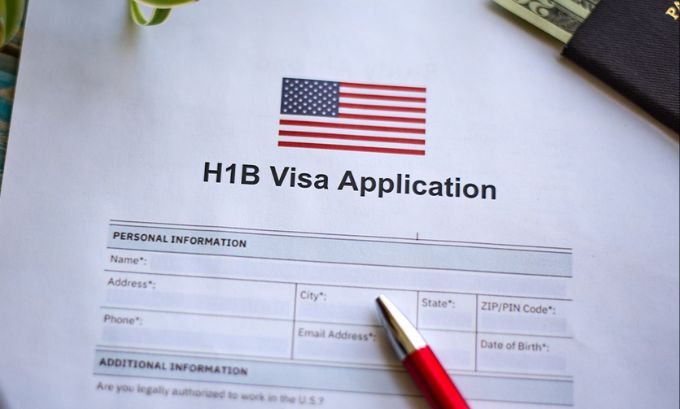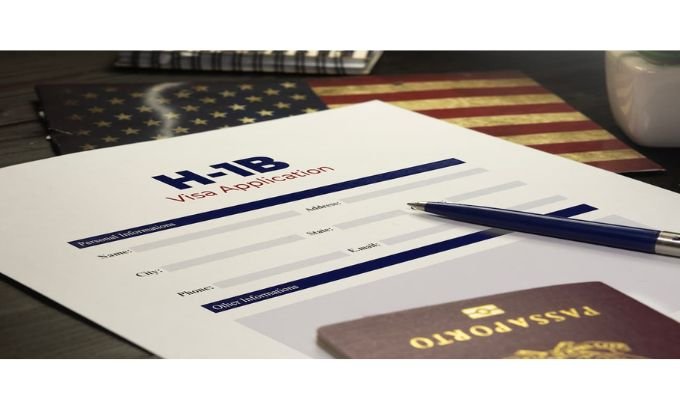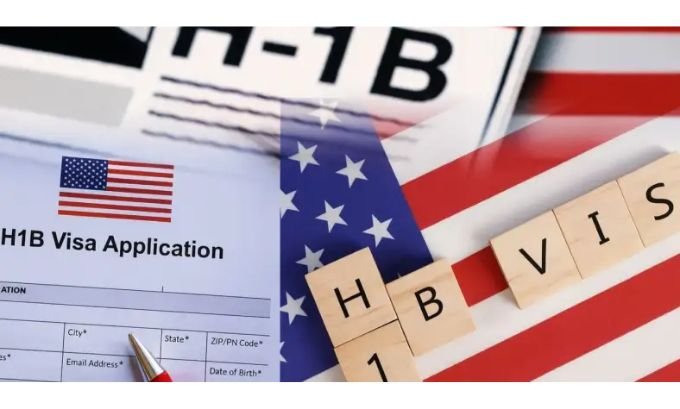The H1B visa can feel like a huge, complicated puzzle. For skilled professionals around the world, it represents a golden ticket to work in the United States, contribute to leading industries, and build a new life. For U.S. employers, it’s a vital tool for bringing in top global talent that can drive innovation and fill critical skills gaps. But with rules that shift and new fees that appear, starting the process for 2025 can feel overwhelming.
This guide is here to change that. We’re going to break down the H1B visa requirements 2025 in a way that makes sense. Think of this as your friendly road map, helping you navigate every turn, from understanding the basic rules to crossing the finish line. We’ll cover what’s new, what’s stayed the same, and what it all means for you.
Table of Contents
What Does It Really Take to Get an H1B Visa in 2025?
Let’s start with the basics. At its heart, the H1B visa is designed for a specific partnership: a U.S. employer needs someone with specialized skills, and a foreign professional has those exact skills. To make this match official in the eyes of the U.S. government, you need to meet a few core conditions. In 2025, this involves proving the job is specialized, showing you have the right qualifications, and navigating the paperwork, including a new fee designed to keep the system honest.
A Closer Look at the Core Requirements
Think of these requirements as the foundation of your application. If any of these pillars are weak, the whole structure could crumble. Let’s explore each one so you know exactly what you’re building.
- Employer Sponsorship: This is non-negotiable. You can’t apply for an H1B visa by yourself. A U.S. company must want to hire you and agree to lead the process. They are your sponsor, your champion in this journey. They file the paperwork, pay the fees, and essentially tell the government, “We need this person’s unique skills on our team.”
- A “Specialty Occupation” Job: This term is at the core of the H1B program. It’s not just any job. A specialty occupation is a role that requires highly specialized knowledge, the kind you typically get through higher education. The minimum requirement for someone to even be considered for the job must be a bachelor’s degree in a specific field. We’re talking about jobs in tech, engineering, healthcare, finance, and other fields where expert knowledge is crucial.
- Your Educational Credentials: If the job requires a specialist, you need to be that specialist. Most commonly, this means you have a U.S. bachelor’s degree or its equivalent from another country. But what if you don’t have a degree? Don’t lose hope. USCIS has a rule of thumb: three years of progressive, professional work experience in your field can be counted as one year of college. So, a person with 12 years of specialized experience could potentially qualify without a degree.
- The Official Petition (Form I-129): This is the main application your employer files with U.S. Citizenship and Immigration Services (USCIS). It’s a detailed document that introduces you, your employer, and the job you’ll be doing. It’s the formal request asking USCIS to classify you as a temporary professional worker.
- The Labor Condition Application (LCA): Before the main petition, your employer has to get an LCA certified by the Department of Labor (DOL). This is your employer’s promise to play fair. They attest that they will pay you a fair wage (at or above what U.S. workers in similar jobs make) and that your hiring won’t negatively affect other workers.
- The New Visa Integrity Fee: For 2025, there’s a new player on the field: a $250 Visa Integrity Fee. This fee is meant to give USCIS more resources to fight fraud and make sure everyone is following the rules. It’s a small price to pay for a system you can trust.

Understanding the Role of USCIS: The Gatekeeper of the H1B Program
USCIS is the government agency that runs the show. They are the ones who will review your petition and ultimately decide your fate. Understanding how they operate is key to a less stressful experience.
- The H1B Lottery: A Game of Chance: Each year, the U.S. government makes 85,000 new H1B visas available. This includes 65,000 for all applicants and an extra 20,000 set aside for those with a U.S. master’s degree or higher. The problem? The number of people who want an H1B visa is often triple that number or more. To make it fair, USCIS runs a random, computerized lottery. If your registration is selected, you win the chance to submit your full application. It’s a system based on luck, and it’s one of the most nerve-wracking parts of the process.
- Skipping the Line: Cap-Exempt Employers: Not everyone has to play the lottery. If you get a job offer from a university, a nonprofit affiliated with a university, or a government research organization, you are “cap-exempt.” These institutions can file H1B petitions for employees at any time of the year, without worrying about the annual cap. This gives them a huge advantage in hiring top talent from around the globe.
- Need for Speed? Premium Processing: The standard waiting time for an H1B decision can be several months, which can feel like an eternity. For employers who need an answer quickly, USCIS offers an optional service called Premium Processing. For an extra fee, the agency guarantees they will make a decision on your case within 15 calendar days. It doesn’t improve your chances of getting approved, but it gives you a clear and fast answer.
The Paperwork Duo: Form I-129 and the LCA
The H1B petition is more than just one form; it’s a package of documents. The two stars of this show are the Labor Condition Application (LCA) and the Form I-129 petition.
The Labor Condition Application (LCA): A Promise of Fairness
Before anything else, your employer files the LCA with the Department of Labor. This document is a set of four promises:
- Fair Wages: The employer swears to pay you the “required wage,” which is the higher of two numbers: the wage they pay other employees with your qualifications, or the prevailing wage for your job in that specific city.
- Safe Working Conditions: They attest that bringing you on board won’t hurt the working conditions of their U.S. employees.
- No Strikes or Lockouts: The company confirms that there isn’t an active labor dispute going on at your future workplace.
- Transparency: They must tell their existing employees they’re hiring an H1B worker, either by informing a union representative or by posting a notice where everyone can see it.
Once the DOL certifies the LCA (which usually takes about a week), it’s time for the main event.
Form I-129: Telling Your Story
The Form I-129 is the formal petition. It’s where your employer lays out the entire case to USCIS. It will include:
- Information about the company’s business.
- Details about your education, background, and experience.
- A complete description of the job, why it’s a specialty occupation, and what your day-to-day duties will be.
This form doesn’t go in alone. It’s accompanied by a stack of supporting evidence: a copy of your degree, your transcripts, letters from previous employers, the certified LCA, and a detailed letter from your new employer explaining why they need you.
Breaking Down the Costs: What to Expect in 2025
Filing for an H1B visa isn’t cheap, and the employer is expected to cover almost all of the costs. The total can change based on the company’s size and the services they choose.
| Fee Type | Amount (2025) | Who Pays & Why |
|---|---|---|
| Base Filing Fee | $460 | This is the standard fee for Form I-129. |
| ACWIA Training Fee | $750 or $1,500 | This fee funds training for U.S. workers. Companies with up to 25 employees pay $750; larger companies pay $1,500. |
| Fraud Prevention and Detection Fee | $500 | A one-time fee for new petitions and transfers to help USCIS fight fraud. |
| Visa Integrity Fee (New) | $250 | This new fee helps fund site visits and audits to ensure compliance. |
| Public Law 114-113 Fee | $4,000 | This hefty fee only applies to large companies (50+ employees) where more than half of their workforce is already on H1B or L-1 visas. |
| Premium Processing (Optional) | $2,805 | The optional fee for a guaranteed 15-day response from USCIS. |
For a small business, these fees can easily top $2,000, and for a large company using premium processing, the cost can approach $10,000 per applicant.

From Temporary Visa to Permanent Home: The Green Card Path
One of the most powerful features of the H1B visa is something called “dual intent.” This means you can hold a temporary H1B visa while also having the intention to stay in the U.S. permanently. This makes the H1B a popular stepping stone toward a Green Card.
| Feature | H1B Visa | Green Card (Permanent Residency) |
|---|---|---|
| Your Stay | Temporary. It’s granted for three years and can be extended to six. After that, you usually need to leave or have a Green Card application in progress. | Permanent. You can live and work in the U.S. indefinitely, as long as you don’t commit serious crimes. The card itself is renewed, but your status is permanent. |
| Your Job | Employer-specific. You can only work for the company that sponsored you. If you want to change jobs, your new employer has to file a new H1B petition for you. | Freedom to work. You can work for any employer, switch jobs, or even start your own business. |
| Path to Citizenship | It’s an indirect path. First, you get the H1B, then a Green Card, and then after several years as a permanent resident, you can apply for U.S. citizenship. | It’s the direct path. After holding a Green Card for five years (or three if married to a U.S. citizen), you can apply to become a citizen. |
Frequently Asked Questions About the 2025 H1B Journey
1. What’s the deal with the new $250 Visa Integrity Fee?
Think of it as an investment in the program’s fairness. This new fee gives USCIS the funds to do more site visits and investigations to make sure employers and employees are following the rules.
2. Is the H1B lottery really just luck? Do I have to go through it?
For most people, yes, it’s a lottery. But you only have to participate if your employer is “cap-subject.” If you get a job at a university or certain research nonprofits, your employer is “cap-exempt,” and you get to bypass the lottery completely.
3. Can my family join me in the U.S.?
Absolutely. Your spouse and any unmarried children under 21 can apply for H-4 visas to come with you. A word of caution: if your child is close to 21, you need to be aware of the Child Status Protection Act (CSPA) rules, as long processing times can cause them to “age out” and lose their eligibility.
4. Should my employer pay for Premium Processing?
It’s optional, but it can be a huge relief. The 15-day turnaround provides certainty and helps you and your employer plan for the future. If you’re not in a rush, the standard processing works just fine.
5. How soon can I start my Green Card application?
Because the H1B visa has dual intent, your employer can start the Green Card process for you at any time, even on day one of your H1B status.
Your Next Steps on the H1B Path
The H1B journey for 2025 is filled with detailed requirements, financial costs, and a bit of uncertainty. But with a clear understanding of the process, it becomes far more manageable. Whether you are an employer looking to attract the best talent or a professional dreaming of a career in the U.S., knowledge is your greatest asset. By staying informed about the roles of USCIS and the DOL, and ensuring every piece of paperwork is perfectly prepared, you can turn this complex puzzle into a clear path forward.
For a closer look at global career paths and lifestyle essentials, check out Tokyo Mart — where opportunity meets everyday living.

